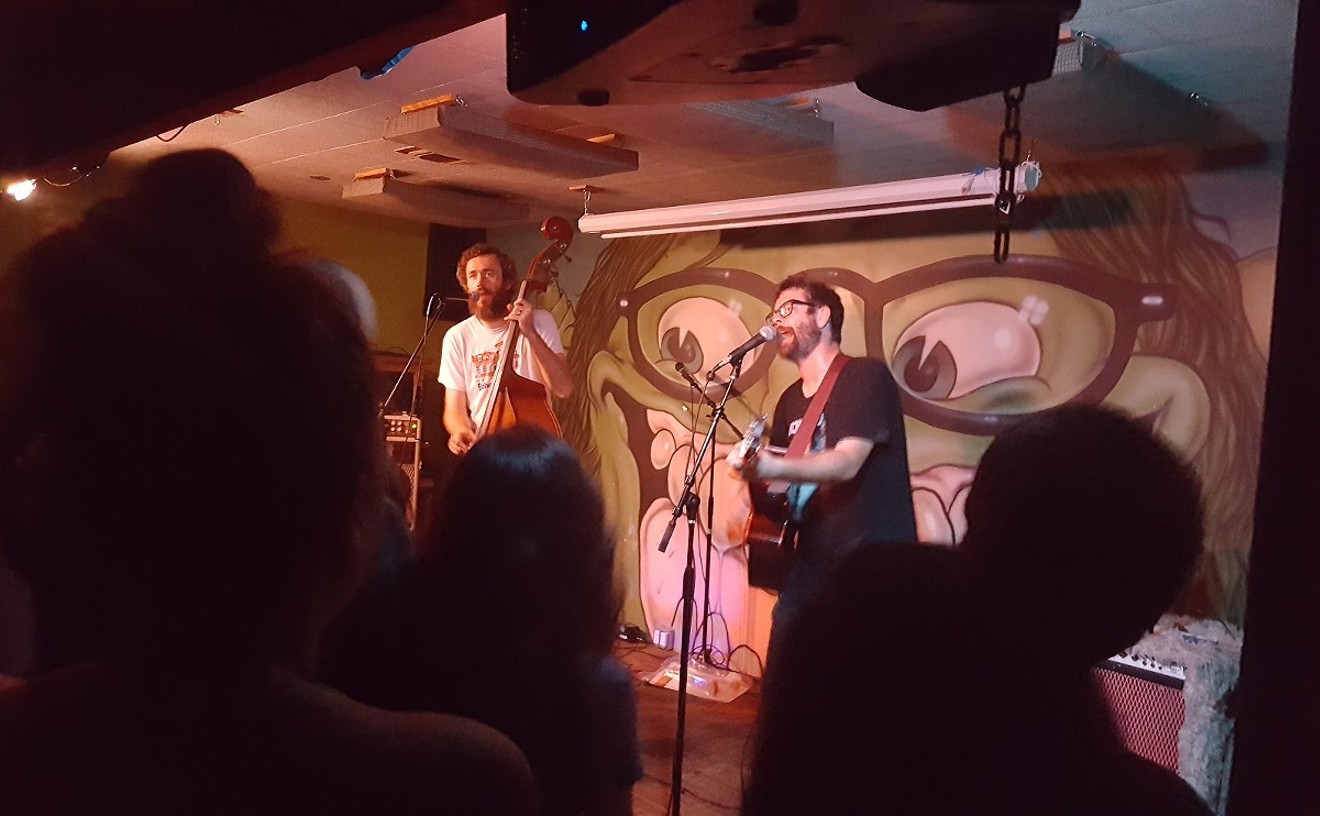Saskia Jordá has no sense of direction.
"I am directionally challenged," the Venezuelan artist admits. "If you let me loose somewhere, I don't know the difference between north and south. I walk into a store at the mall, and then I come out and go back the same way I came. It's hopeless."
Jordá has channeled her own sense of displacement into "Cartograms of Memory," a new show at Modified Arts. In mostly new work, the artist — who has lived all over the United States since moving here from Caracas at age 16 in the early 1990s — uses the experience of relocation as a jumping-off place for a series of fictional, multi-dimensional maps that reference her own far-flung journeys.
Jordá has employed maps and mapping in her work for about a decade, although never as a simple study of placement. Her maps are neither geographically correct nor navigationally sound. They're personal, written from private memories that draw the viewer in with sexy texture and vivid reds and blues. And though they chart her own travels from Venezuela to Phoenix and points in between, these soft, playful maps are never so personal that we feel shut out by their topography and recollection.
Much of the work in "Cartograms of Memory" is made with wool that Jordá has felted into warm fuzziness. It's stretched like a second skin into a background for her fictional maps, a creamy surface from which cotton batting bursts, and onto which she's stitched glossy threads that dangle and climb and pool onto the floor below.
Cartograms of Memory, the show's centerpiece, is crafted entirely from Jordá's velvety quarter-inch felt. Its gorgeous form, made of rounded and vivisected hunks of white-ish wool that resemble unbaked pie dough, dangles from the gallery's low ceiling, flowing onto the floor in great woolen puddles and calling to mind the mammoth dinosaur skeletons one might see in a science museum.
When she was installing the piece, which takes up a good third of Modified's main gallery space, Jordá heard passersby calling to one another about the crazy Tyrannosaurus bones.
"Now we're calling the piece 'Maposaurus,'" jokes Jordá, who doesn't seem offended that people think she's created a giant fossil. "It does look sort of skeletal. But it's about emotional displacement and geographical displacement. These are ephemeral ideas, and this is my way of representing that graphically."
Less ambiguous, You Are Here, Part I: Migration, 2010 is an installation that marks Jordá's journey from Venezuela to Arizona in layers of gauzy white mesh, each of them a different translucent, thread-stitched map suspended from on high. The map closest depicts Maricopa County, the one farthest an outline of South America, and each map between illustrates one of Jordá's other former homes. The mesh squares are connected by a single thread of red yarn stitched straight through them; the ball of yarn dangles in the foreground, a humorous reference to those "you are here" dots found on maps and directories. It's a piece that evokes yearning for a grounded life (Jordá once lived in five different U.S. states in a single year) and can be seen as a commentary on Arizona's preoccupation with chasing off immigrants.
The piece, Jordá says, is not simply an essay on illegal immigrants in Arizona, but in the general transient nature of our state. "People come here from all over," she points out. "And there's the snowbirds, who only live here part-time. And in a broader sense, the economy is displacing people everywhere — they're losing jobs and moving back in with their parents, or losing their homes."
Jordá's work brings together homespun materials — felt, thread, fabric —without ever feeling folksy or traditional. Her Triangulation, 2010 is a felt map criss-crossed with bright red embroidery thread, its land mass bracketed by soft, wet-looking blue from a colored pencil; the piece looks more like a crafty, vibrant engineer's sketch than a quilt panel by Grandma. And the stacked industrial felt of Calvino's Imaginary Islands, 2010 suggests a land mass that's ethereal but throbbing with life, a pond of colorless plasma that begs to be touched.
"Maps are loaded with emotional information," Jordá says. "The first thing you do when you look at a map is try to orient yourself in it. I want you to see the ways that maps are beautiful, both graphically and emotionally. They really tell a story about life."










